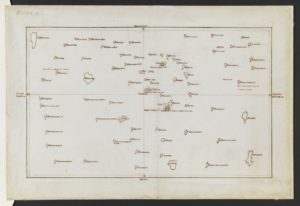
Te Reo Maori, also known as the Maori language, is a language that is part of the Polynesian languages, being one of the official languages of New Zealand. Of great historical and cultural importance, the Maori language consists of an alphabet of 15 letters, with few variations among the islands that speak the dialect.
Today, in New Zealand, few young people still keep the Maori language, being most commonly spoken among the elderly population, over 65 years old. Its historical importance is so striking that it marked the colonization process of New Zealand, revealing important people for the country, such as Tupaia, the first translator, also known as the navigator.
According to the tales of Taonga, Tupaia was a high priest and an expert navigator, having been responsible for helping in the navigation of British ships to the Polynesian islands. Unlike what we have today, in traditional maps, the maps of Tupaia portray the entire trajectory of discoveries of the islands by their people, long before our time.

Map used by Tupaia for navigation.
Due to the similarity of his language with the Maori language, Tupaia was able to understand and communicate with natives from other Polynesian islands, mediating the communication between these peoples and British explorers and, from there, with teamwork, presenting the islands and promoting what we now know as New Zealand.
Maori history can be found in museums and people’s narratives, and is an essential part of the New Zealand culture and the preservation of ancient peoples and traditions.
Credits: Image from the Auckland Museum.
